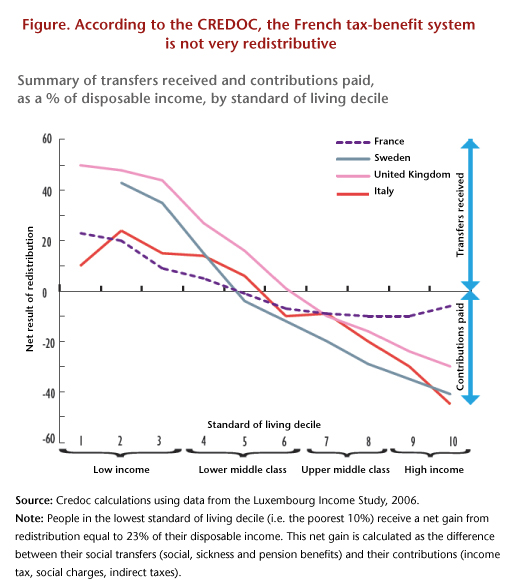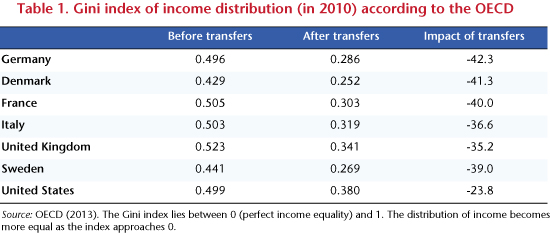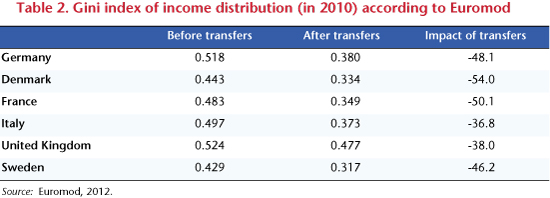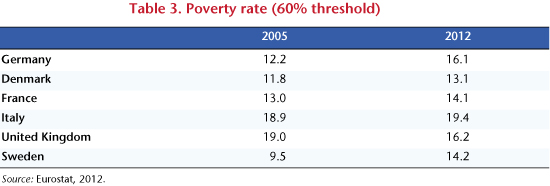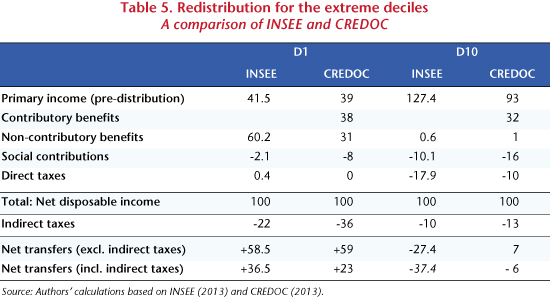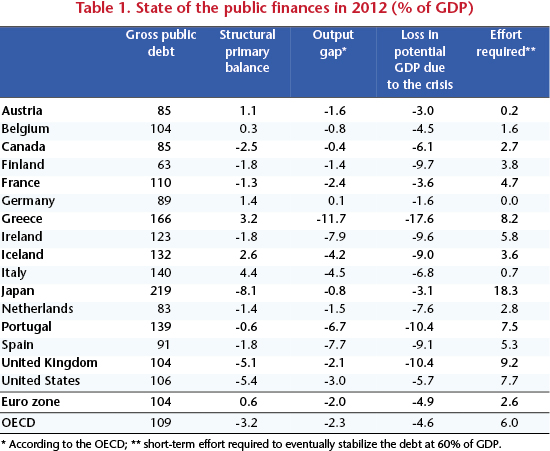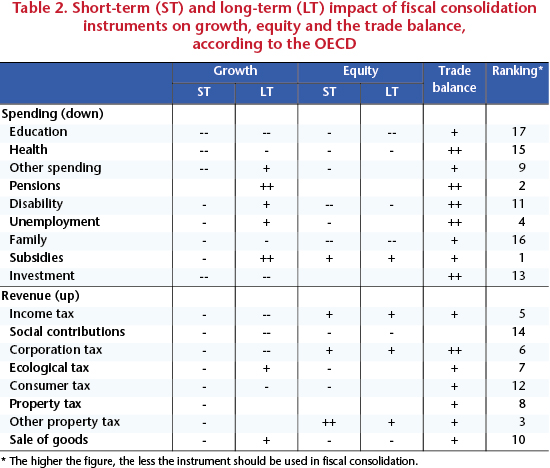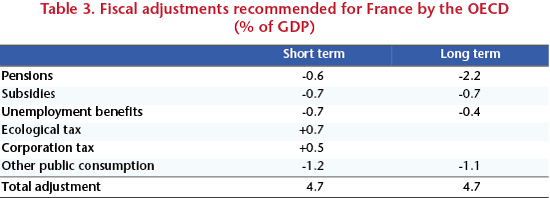Regulating the financial activities of Europe’s banks: a fourth pillar for the banking union
By Céline Antonin, Henri Sterdyniak and Vincent Touzé
At the impetus of EU Commissioner Michel Barnier, on 29 January 2014 the European Commission proposed new regulations aimed at limiting and regulating the commercial activities of banks “of systemic importance”, that is to say, the infamous “too big to fail” (TBTF).
Regulating proprietary activities: a need born of the crisis
Due to banks’ particular responsibility in the 2008 economic and financial crisis, many voices have been raised demanding stricter regulation of their financial activities. This has led to two approaches: prohibition and separation.
In the United States, the “Volker rule” adopted in late 2013 prohibits banks from engaging in any proprietary trading activities as well as taking holdings of greater than 3% in hedge funds. The banks can nevertheless continue their own market-making and hedging activities. Obviously, this rule does not prohibit banks from investing their own funds in financial assets (equities, government and corporate bonds). The purpose of the rule is to prevent a bank from speculating against its customers and to minimize the use of the leveraging that proved so costly to the financial system (banks using their clients’ money to speculate on their own behalf).
The European approach is based on the Vickers Report (2011) for the United Kingdom and the Liikanen Report (2012) for the European Union. These reports recommend some separation between traditional banking activities on behalf of third parties (management of savings, provision of credit, simple hedging operations) and trading activities that are for the bank’s own account or bear significant risk, although the activities can be maintained in a common holding company. The Vickers Report proposes isolating traditional banking activities in a separate structure. In contrast, according to the Liikanen report it is proprietary trading and large-scale financial activities that need to be isolated in a separate legal entity.
The idea of separating banking activities is not new. In the past, many countries enacted legislation to separate commercial banks from investment banks (Glass-Steagall Act in 1933 in the United States, the 1945 Banking Act in France). These laws were revoked in the 1980s due to a growing belief in the superiority of the “universal bank” model, which allows a single bank to offer a full range of financial services to individuals (loans, deposits, simple or complex financial investments) and especially to business (loans, hedging, issuance of securities, market-making activities). The crisis exposed two defects in this model: the losses incurred by a bank on its proprietary trading and other activities on the markets led to a loss in its equity capital, thereby calling into question the bank’s lending activities and requiring the State to come to its rescue in order to ensure that bank credit didn’t dry up. The universal bank, backed by the State’s guarantee and sitting on a mass of deposits, did not have sufficient vigilance over its proprietary trading activities (as was shown by the cases of Kerviel, Picano-Nacci and Dexia).
An ambitious European regulatory proposal
This proposal for bank reform is coming in a situation that is complicated by several factors:
1) The Basel 3 regulations currently being adopted already impose strict rules on the quality of counterparties of the equity capital. Speculative activities must be covered by substantial levels of common equity.
2) The banking union being developed provides that in case of a crisis creditors and large deposit holders could be called upon to save a bank facing bankruptcy (principle of “bail in”), so that taxpayers would not be hit (end of “bail out”). But there are doubts about this mechanism’s credibility, which could cause a domino effect in the event that a TBTF bank faces bankruptcy.
3) Some European countries have anticipated reform by adopting a separation law (France and Germany in 2013) or setting prohibitions (Belgium). In the United Kingdom, a separation law inspired by the Vickers Report (2011) is to be adopted by Parliament in early 2014.
The regulatory proposal presented on 29 January is more demanding than the Liikanen Report. Like the “Volker rule” in the US, it prohibits speculation on the bank’s own account through the purchase of financial instruments and commodities, as well as investments in hedge funds (which prevents banks from circumventing the regulation by lending to hedge funds while holding significant shares in these funds, thereby taking advantage of the greater leverage).
Moreover, in addition to this prohibition the European legislator provides for the possibility of imposing a separation on an independent subsidiary for operations that are considered too risky, that is to say, that would result in taking positions that are too large. The aim is to address the porous border between proprietary trading and trading for third parties, as bankers could take risks for themselves while not covering the positions sought by their clients. With these new regulations, the legislator hopes that in the event of a bank crisis public support for the banks will benefit only depositors, not the bankers, with as a consequence an overall reduced cost.
Compared to French regulations, the regulatory proposal is more restrictive than the law on the separation and regulation of banking activities of 26 July 2013. Indeed, French law provides for the legal compartmentalization only of certain proprietary activities and highly leveraged activities in an independently financed subsidiary; strict prohibition concerns only high-frequency trading activities and speculation in agricultural commodities. And there are numerous exceptions: the provision of services to clients, market-making activities, cash management, and investment transactions and hedging to cover the bank’s own risks. In contrary, the prohibitions are broader in the regulatory proposal, as it applies to all proprietary trading. In addition, the regulatory proposal prohibits investment in hedge funds, whereas the French law permits it provided that such activities are compartmentalized.
The regulatory proposal nevertheless concerns only banks of a systemic size, i.e. 30 out of the 8000 found in the European Union, representing 65% of banking assets in the EU. It will not be discussed until the election of the new Parliament and the establishment of a new Commission.
A reform that doesn’t have a consensus
Michel Barnier’s proposed reform has already provoked sharp criticism from certain member countries and the banking community. Some have reproached it for intervening in an area where it has no jurisdiction, which clearly indicates the current complexity of the legislation governing the European banking system.
France, Germany, Belgium could object, “Why are you interfering? We have already enacted our banking reform.” But the logic of the banking union is that the same laws apply everywhere. These countries have chosen to carry out a minimal banking reform in order to pre-empt the content of European law. This is hardly acceptable behaviour at European level. There is also the case of the United Kingdom (for which Barnier’s proposal opens the exit door: the regulations will not apply to countries whose legislation is more stringent).
The banking union provides for the European Central Bank to oversee the large European banks and for the European Banking Agency to set the regulations and rules on supervision. The Commission can therefore be reproached for intervening in a field for which it is no longer responsible. On the other hand, the crisis clearly showed that banking concerns more than just the banks. It is legitimate for EU political institutions (Commission, Council, Parliament) to intervene in the matter.
The proposal has encountered two contradictory criticisms. One is that it doesn’t organize a genuine separation of deposit-taking banks and investment banks. From this perspective, deposit or retail banks would be entrusted with specific tasks (collecting and managing deposits; managing liquid savings and risk-free savings; lending to local government, households and businesses); they would not have the right to engage in speculative activities or trading activities or to lend to speculators (hedge funds, arranging LBO transactions). These banks would be backed fully by a government guarantee. In contrast, market or investment banks would have no government guarantee for their market interventions and equity and other above-the-line operations. Since these transactions are risky, the absence of a public guarantee would lead them to set aside a greater amount of capital and to bear a high cost for attracting capital. This would reduce their profitability and thus the development of hedging and other speculative activities. A company that was in need of a hedging operation would have to have it carried out by an investment bank and not by its regular bank, so at a higher cost. Conversely, this would reduce the risk that banks suck their clients (banks and companies) into risky investments and operations. A reform like this would greatly increase the transparency of financial activities, at the cost of diminishing the importance of the banks and financial markets. Michel Barnier did not dare take the principle of separation to this, its logical conclusion. He remains instead within the logic of the universal bank, which uses its massive size as a deposit bank to provide financial intermediary services to its customers (issuance of securities, coverage of risk, investment in the markets, etc.), to intervene in the markets (market-making for foreign exchange and public and private securities) and to underwrite speculative activities.
The reform is nevertheless facing stiff opposition from the banking community, who would have preferred the status quo. Hence Christian Noyer, a member of the ECB Governing Council, has labelled the proposals “irresponsible”, as if the ECB had acted responsibly before 2007 by not warning about the uncontrolled growth of banks’ financial activities.
The European Banking Federation (EBF) as well as the French Banking Federation (FBF) are demanding that the universal banking model be preserved. The banks are criticizing the obligation to spin off their market-making operations (including for corporate debt). According to the FBF, this regulation “would lead to making this operation considerably more expensive,” which “would have a negative impact on the cost of financing companies’ debts and hedging their risks”. However, this obligation may be waived if the banks demonstrate that their market interventions do not require them to take on any risk. The banks could therefore continue to act as market makers provided that they set strict limits on their own positions; they could provide simple hedging operations by covering these themselves.
A fourth pillar for the banking union?
European banks have of course rightly pointed out that this reform comes in addition to the establishment of the SSM (single supervisory mechanism), the SRM (single resolution mechanism), and the ECB exercise assessing the banks (launched in November 2013). The overall system does lack cohesion; a well thought-out schedule should have been set.
However, the separation advocated by the Barnier proposal lends credibility to the banking union and its three pillars (SSM, SRM and deposit insurance). This project does contribute to convergence in banking regulations, from both a functional and a prudential perspective. The establishment of a consistent framework simplifies control by the European supervisor under the SSM (the ECB will monitor the banks’ normal activities and ensure that they are not affected by speculative activities). The separation recommended by the Barnier proposal enhances the credibility of the SRM; there will no longer be any banks that are too big to go bankrupt, and investment bank losses will not rebound onto the lending activities of deposit banks and will not have to be borne by the taxpayer. By reducing the risk that deposit banks might fail, the risk of a costly rescue plan for investors (bail-in) is also lowered, as is the risk of needing recourse to deposit insurance. In this sense, the draft regulations can be considered a fourth pillar of the banking union.
For more information:
– Antonin C. and V .Touzé V. (2013), The law on the separation of banking activities: political symbol or new economic paradigm?, OFCE Blog, 26 February 2013.
– Avaro M. and H. Sterdyniak H. (2012), Banking union: a solution to the euro crisis?, OFCE Blog, 10 July 2012.
– Gaffard J.-L. and J.-P. Pollin (2013), Is it pointless to separate banking activities?, OFCE Blog, 19 November 2013.
